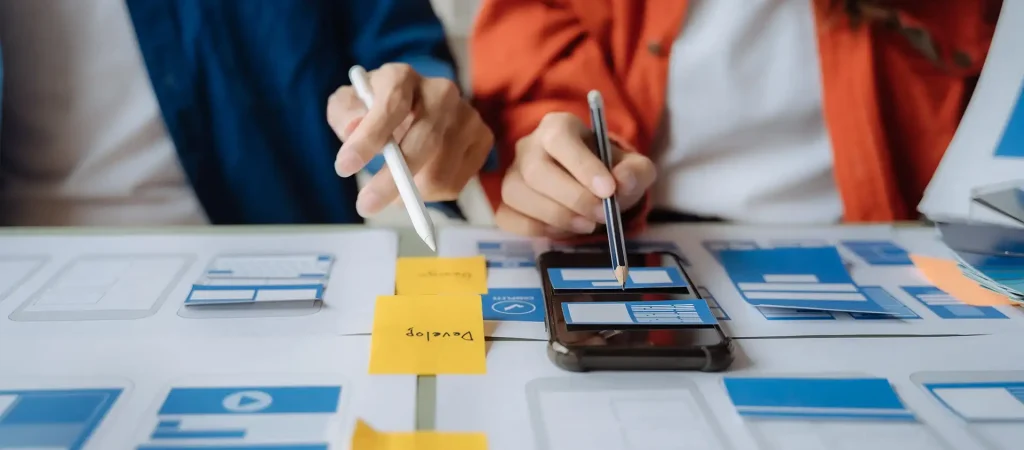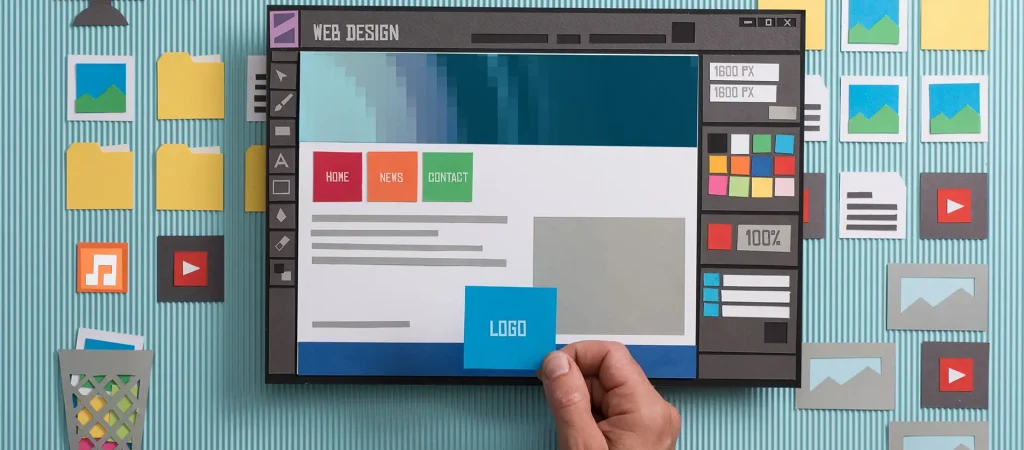Web design is a field that at first glance may seem easy and uncomplicated. All you need is to know the basics of programming, be able to use various tools and graphics programs, and have a good imagination. However, as with many fields, the devil is in the details. The work of a web designer is not only designing and coding websites, but also many other activities, such as communicating with clients, analyzing the market, designing according to trends, and constantly improving one's skills. In addition, in addition to the obvious problems that a web designer must face, there are also many non-obvious issues that go unnoticed, but often have a decisive impact on the course and final appearance of the project.
Lack of proper material from the client

Lack of proper material from the client is a common problem for web designers. Clients often do not have complete information about their company or product, leading to delays in the design process and inconsistencies between the website and company or product information. Lack of the right material can also hinder the content creation process. To solve this problem, it is important to make sure that the client has provided complete material about their company or product before starting to design the website. You can also make a list of materials that must be provided by the client and facilitate the content creation process by providing templates or sample content. It is also important to keep in touch with the client for missing information.
Lack of understanding of the design process

Designing a website usually requires a complex process that involves many steps, such as gathering requirements from the client, designing the site layout, creating content, testing and publishing the site. Clients are often unaware of this process and the requirements that must be met to make the site functional and attractive to users. They may have unrealistic expectations about the project time or the functionality of the site, leading to misunderstandings between the client and the designer. In addition, the client may have a vision for the website that may not be feasible or practical, which further introduces difficulties into the project. All these factors can lead to delays in the project, which in turn affects the budget and efficiency of the project. Therefore, it is important for the designer to have a good understanding of the client's requirements and for the client to be aware of the design process and technical capabilities to avoid misunderstandings and project delays.
Too much or too little guidance

During the web design process, designers have to deal with different levels of client involvement. Some clients want full control over the project and provide plenty of guidance, while others have no idea how the site should look and function. The wrong amount of guidance can lead to disorganization of the project and hinder the work of the design team, as well as lead to a misunderstanding of the client's needs, resulting in dissatisfaction with the final product. To prevent this, designers should discuss with the client their expectations and preferences for the site's appearance and functionality before starting the design, compile a list of questions to help elicit information from the client about their expectations, and skillfully manage the amount of guidance from the client while giving them control over the project.
Additional demands from customers during the project

During the course of a project, clients often make additional requirements and changes that can affect project schedule, cost and efficiency. These additional requirements can include requests to add new functionality, change the layout of the website or improve existing content. They can affect the project schedule, leading to delays in website publication. They can also increase project costs and prevent the website from being tested, generating technical problems. To solve this problem, it is important to communicate with the client on a regular basis and make sure they have clear and specific requirements before the project begins. It is important to establish a schedule and scope of work with the client before the project begins, but this only makes sense if the client understands what the project includes. It is a good idea to set detailed criteria for changes and additional requirements in the contract and make sure the client understands them. Additional client requirements during the course of a project are not good news, so it is worth educating clients that deciding to make such changes can affect the cost and schedule of the project.
Expectations inconsistent with budget

Sometimes clients request additional functionality and changes during the course of a project, which can significantly affect its cost and schedule. In such cases, it is important for designers and clients to sit down for negotiations and work out the best solutions to meet the client's expectations while staying within budget and not delaying the project.
It is also important for designers to be able to explain to clients the costs associated with different functionalities and technologies. This will ensure that clients have realistic expectations and are able to align their requirements with their budget. All changes and additional requirements should be disclosed and discussed before the project begins, and included in the contract between the client and designer.
In cases where clients have high expectations but low budgets, designers should propose alternative solutions that meet the client's requirements while staying within the project budget and schedule. It is important for clients to be aware that there are always options to achieve design goals while staying within budget.
Lack of consistency between website and brand

Designing a website is therefore a complex and demanding process. Designers must not only skillfully combine aesthetics, functionality, consistency with the brand, but also communicate with the customer and respond to their needs and expectations. Understanding and dealing with these issues will allow designers to create effective and efficient websites that meet the needs and requirements of users and customers.

